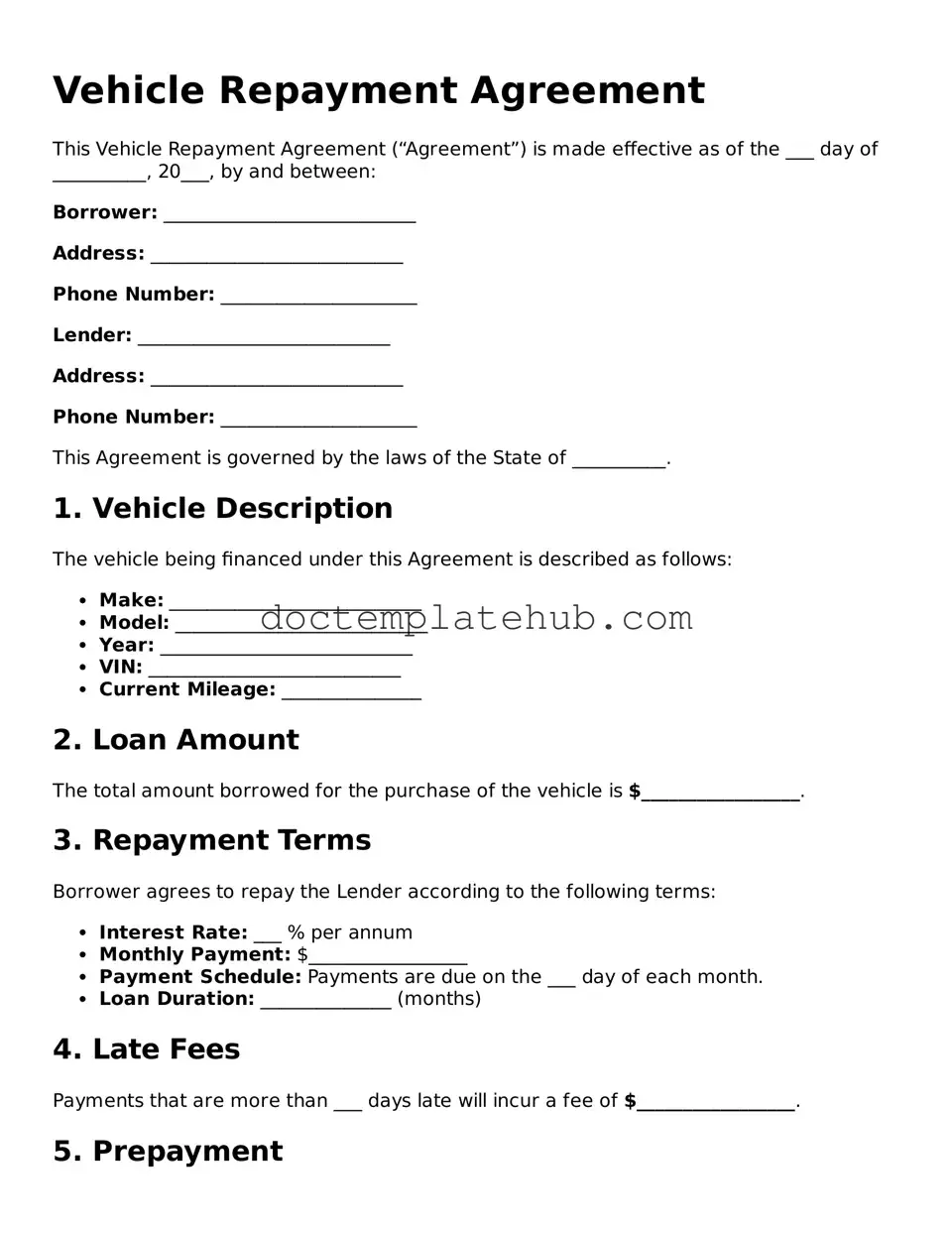What is a Vehicle Repayment Agreement?
A Vehicle Repayment Agreement is a legal document that outlines the terms under which a borrower agrees to repay a loan taken out for purchasing a vehicle. This agreement specifies the repayment schedule, interest rates, and any penalties for late payments, ensuring both parties understand their obligations.
Who needs to sign the Vehicle Repayment Agreement?
Typically, both the borrower and the lender must sign the Vehicle Repayment Agreement. The borrower is the individual or entity taking out the loan, while the lender is usually a financial institution or dealership providing the financing. In some cases, a co-signer may also be required, especially if the borrower has a limited credit history.
What information is included in the Vehicle Repayment Agreement?
The agreement generally includes the names and addresses of the parties involved, the vehicle's details (make, model, VIN), the loan amount, interest rate, repayment schedule, and any fees or penalties for late payments. It may also outline the consequences of defaulting on the loan, such as repossession of the vehicle.
How is the repayment schedule determined?
The repayment schedule is typically based on the loan amount, interest rate, and the borrower's financial situation. Lenders may offer various options, such as monthly or bi-weekly payments, allowing borrowers to choose a plan that fits their budget. It’s important to review these options carefully to find the most manageable repayment structure.
What happens if I miss a payment?
If a payment is missed, the lender may charge a late fee, as specified in the agreement. Repeated missed payments can lead to more severe consequences, including negative impacts on credit scores and potential repossession of the vehicle. It’s crucial to communicate with the lender as soon as possible if you anticipate difficulty making a payment.
Can I modify the Vehicle Repayment Agreement?
Yes, modifications to the agreement can be made, but both parties must agree to any changes. It’s advisable to document any modifications in writing and have both parties sign the updated agreement to avoid misunderstandings in the future.
What should I do if I want to pay off the loan early?
If you wish to pay off the loan early, review the agreement for any prepayment penalties. Many lenders allow early repayment without penalties, but it’s essential to confirm this before proceeding. Contact your lender to discuss the process and any potential savings on interest payments.
Is the Vehicle Repayment Agreement legally binding?
Yes, once signed by both parties, the Vehicle Repayment Agreement is a legally binding contract. This means that both the borrower and the lender are obligated to adhere to the terms outlined in the agreement. If either party fails to fulfill their obligations, the other party may seek legal recourse.
Where can I obtain a Vehicle Repayment Agreement form?
Vehicle Repayment Agreement forms can often be obtained from lenders, financial institutions, or online legal document services. It’s advisable to ensure that the form complies with state laws and includes all necessary terms to protect both parties involved in the agreement.
